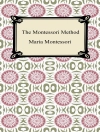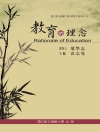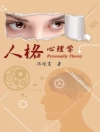Turn good intentions into better outcomes—by design!
Why leave student success up to chance? By combining your intuition and experience with the latest research on high-impact learning practices, you can evolve your teaching from good to great and make a lasting difference for your students.
Organized around the DIIE framework, Great Teaching by Design takes you step-by-step from intention to implementation to accelerate the impact your teaching has on student learning. Inside, you’ll find:
- A deep dive into the four stages of the DIIE model: Diagnosis and Discovery, Intervention, Implementation, and Evaluation
- A fresh look at the Visible Learning research, which identifies the most powerful strategies for teaching and learning
- Stories of best practices in action and examples from classrooms around the world
Great teaching may come by chance, but it will come by design. Whether you’re new to teaching or looking to give your instruction a boost, take up the challenge and discover a new framework for teaching with true intentionality.
विषयसूची
Tables, Figures, and QR Codes
Acknowledgments
About the Authors
Introduction
Chapter 1: Implementing What Works Best
The DIIE Model as Shared Language for Implementation
Ways of Thinking and Motivations
Teacher Decision Making
Ways of Thinking and Decision Making
Motivation and Decision Making
Teacher Motivation
Motivation and Implementation
A Shared Language for Great Teaching
Chapter 2: Diagnosis and Discovery
The Who Behind the Learning
Standards of and for Learning as the Starting Point
Initial Assessments
Development of Initial Assessments
Teacher Noticing
Chapter 3: Intervention
This Is Not Deficit Thinking
Identifying the Skill, Will, and Thrill: Where Are Our Learners Now?
Applying the Goldilocks Principle
High-Probability Interventions
Aligning High-Probability Interventions With Skill, Will, and Thrill
High-Probability Interventions for Enhancing Skill
High-Probability Interventions for Enhancing Will
High-Probability Interventions for Enhancing Thrill
Chapter 4: Implementation
Fidelity to Clear and Visible Learning+® Goals
Student Awareness of Success Criteria
Success Criteria and Aligning the Intervention
Necessary Dosage of an Engaging, Challenging, and Authentic Learning Experience
Adaptations Through Adaptive and Compensatory Approaches
Quality Delivery in an Environment for Implementation
Fostering an Environment of Mistakes
Chapter 5: Evaluation
A Broader View of Evaluation
Planning for Evaluation
Evaluating the Evidence
The Role of the Post-Assessments in Evaluation
Collecting Evidence From Post-Assessments
Evaluating the Evidence From Post-Assessments
Conclusion
References
Index
लेखक के बारे में
Nancy Frey is a Professor in Educational Leadership at San Diego State and a teacher leader at Health Sciences High and Middle College. She is a credentialed special educator, reading specialist, and administrator in California. She is a member of the International Literacy Association’s Literacy Research Panel. Her published titles include The Illustrated Guide to Visible Learning, Welcome to Teaching Multilingual Learners, Teaching Foundational Skills to Adolescent Readers, and RIGOR Unveiled: A Video-Enhanced Flipbook to Promote Teacher Expertise in Relationship Building, Instruction, Goals, Organization, and Relevance.












